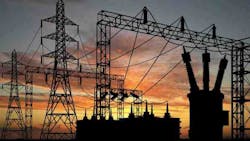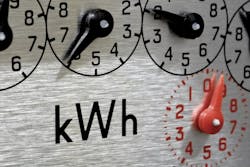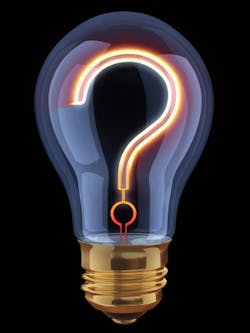Distributed Generation (DG) Is Here to Stay
Nothing is more exciting (actually, there are a lot more exciting things) than returning home after a long day at work on a very hot day, blasting your AC at the lowest possible temperature and watching your favorite soccer championship game/Game of Throne episode (well let’s ignore Game of Throne since this show airs on Sunday) on your 60 inch TV, while playing with your tablet/smart phone/laptop all at the same time.
When we are young we were used to seeing those massive power plants’ stacks pushing smoke (steam) to the environment. They were usually far away by a river somewhere, out of sight, out of mind. The power plant’s main function of course is to generate power that travels to our homes via the massive transmission towers you see along the highway and then make it magically to your house. So the electric power utilized to power your laptop or device as you read this article from your home in New York may be coming from generators in Canada. Having said that, the closer the source of power to the load, the better, since the losses will be lower; think about Canada again, the power is coming hundreds of miles away to your home. The closer the substation to the load center the shorter the distance the distribution feeders will have to travel carrying the load to your house.
This paper will not discuss the technical aspect of DGs, there are several online papers covering all technical information. For the purpose of this paper, treat DG as a small power plant (without the pollution of course) that is located in the basement of your house or business, i.e. a high rise building, hospital, etc. that basically utilizes natural gas to generate electricity as well as hot water/steam that can be used by the household/hospitals.
The size of your DG output may be:
- Smaller than your electric usage, so you are forced to get power for the remainder of your usage from the utility.
- Larger than your usage, in this case, you can export to the utility (different utilities have different rules). So Joe, the typical utility user who has been paying monthly utility bills all his life is now receiving money from his utility (now how cool is that).
There are various arguments discussing the impact when several Joe(s) install DGs, which may result in the utility losing revenues. DGs are not that widespread yet and customers nowadays cannot survive for a temporary loss of power; as a result, in the event their DG is conducting maintenance or if there was a failure, they will have no power, so they are more than likely to sign a back-up agreement with their utility, to ensure that the utility will supply them with the agreed upon electric load. DG adoption is on the rise and so as customers’ electric usage, so the small DGs may not be enough to supply the entire load.
Smart utilities should make use of the available DG in their areas and find ways to defer expensive relief/reliability projects by relying on their customers’ load reduction and exports.
Traditional flow of power:
New flow of power:
Let’s illustrate with an example:
1MW (1,000,000 watts) is equivalent to the load of a 1,000 typical small home. Imagine a certain area has a load of 100 MW, the generator will supply more than 100 MW, say 101 MW, due to the losses in transmitting and distributing the load to that area, i.e. generators will be sending 101 MW, i.e. assume we lose 0.4 MW in the transmission process and 0.6 MW in the substation and distribution process.
Let’s analyze the impact if a customer installs a 5 MW DG (whether the customer total load is 5 MW or if it is lower, i.e. 2 MW and the customer is exporting 3 MW back to the grid), the following changes will be witnessed:
In reality, since we are reducing the total load by 5 MW and the losses are a function of the load, then the generator, transmission, etc. will be reduced by more than 5 MW and the generator will most likely generate less than 96 MW, since the losses will now be smaller than 1 MW.
There is no doubt that as more DGs are installed in certain areas, the generators will be impacted as they will be generating and selling less power. Regulated utilities will enjoy the benefits of deferring load relief expenditure, since their transmission/sub-transmission/distribution, etc. are now seeing less load.
Reliable utilities will still plan for the possibility of the DGs (they counted for load relief purposes) being unavailable, i.e. ensure that they can supply the full 100 MW and not just 95 MW, but since utilities usually plan and design their system for the summer or winter peak, then a probability analysis may be warranted to determine the probability of losing one of their limiting asset (i.e. transmission tower/transformer) and at the same time losing the DG during the summer/winter peak hour. Each utility will have to address that possibility. Another measure may be to adopt emergency load relief plans in the event this doom day scenario does materialize. Not to mention that it is to the customer’s best interest to ensure that his/her DG is running at maximum load during the hot summer days, when the power tariff is at its all year high.
In short, the widespread of DGs and the long term forecast is still not clear, similar to the electric vehicle forecast, there are factors that may impede the DG adoption:
- Gas price
- Space limitation
- Cost
- Utility specifications pertaining to exporting excess power.
- Available short circuit.
Utilities will have to continuously monitor the DG penetration/forecast/technology enhancement/loss of revenue/government incentives for customers’ to install DGs. Regulation is key as well; the fact that regulated utilities are guaranteed a certain rate of return Vs. non-regulated utilities will also play a key role.
The fact is that customers will continue to look for ways to reduce their electric bill and will not get out of their way to help utilities or generators’ owners; more people are now aware of climate change and are looking for ways to reduce pollution and preserve earth, now imagine doing that while making money at the same time. Similar concepts apply to solar, wind and other renewable sources.
Are we going to witness the time when most customers have electric vehicles that are charged via power generated via their DGs, solar, small wind turbine, etc. and have the ability at any time to export to the utility via his/her excess generation or by sending power from his car to the grid when not in need?
Will the utility’s workforce be downsized and have more assets (lines/transformers) than needed? The interesting picture below may be the future, just stranded assets.
Will most customers become independent power producer and be part of the energy market? The future is unknown, the weather pattern is unknown, the availability/price of gas is unknown, what is known is that DGs are here to stay, at least for now.
About the Author
Ahmed Mousa
Principal Engineer/Adjunct Professor/Board Member/Founder & CEO
Ahmed Mousa, M.S.E.E., has over 12 years of experience in transmission, sub-transmission, substations and distribution systems with industry leaders such as Consolidated Edison, PSE&G, PEPCO, and First Energy. He is a subject matter expert in transmission/sub-transmission, distribution and substation planning. Ahmed has years of expertise conducting PSS/E load flows, i.e. forced & scheduled outages analysis, phase angle studies, voltage analysis, network/non-network load transfers. Ahmed provides analysis and support during heat waves, storms and other system emergencies.
Mr. Mousa is an Adjunct Professor at New Jersey Institute of Technology (NJIT) teaching advanced topics graduate electrical engineering courses.
Mr. Mousa serves on the New Jersey Association of Energy Engineers board as a board member.
Mr. Mousa is currently the Principal Engineer at PSE&G in the Electric Delivery Planning section, where he is responsible for managing power system generation, transmission and distribution simulation studies, developing the short/ long range substation forecasts, analysis and load relief, performing short circuit studies, performing breaker duty analysis, developing transmission and distribution station and feeder designs, reviewing large customer demand proposals. Mr. Mousa is responsible for all Distributed Energy Resources technical evaluations and interconnection agreements.
Mr. Mousa is the Founder/CEO of The Electric Bridge Consulting firm assisting large and small utilities, colleges/universities & consulting firms by providing electric utility services, educational/training services, consulting services, leadership seminars, career consulting, lecturing services, electric professional engineering courses & national & international webinars.
Mr. Mousa was responsible for the short term, long term (1/5/10/20/30 years), and emergency planning for the area substation, transmission / sub-transmission feeders and the 4 kV system at Consolidated Edison. He has conducted several studies on the impact of electric vehicles, distributed generation, steam to AC conversion, energy efficiency models, and R&D initiatives on the distribution and transmission system.
Mr. Mousa was the project manager for a SCADA GE XA21 Energy Management System and the project manager and project engineer for President Obama’s Department of Energy stimulus grant for Consolidated Edison’s 4 kV system.
Awards include the 2009 3rd Quarter Distribution Engineering ALVA Award for 21st Century Leader, the 2012 “Sustain Energy Reliability” Team Award, and the 2013 Excellence in Design and Genius Engineer (EDGE) Award Nominee for “Developed Load Calculation Tools for System and Transmission Operations.” He has over eight years of experience in providing training in a wide range of subjects including PSS/E, 4 kV systems, distributed generation grid adoption, system operation outage analysis, transformer ratings, voltage studies, basic and advanced power flow, intermeshes, phase angle studies, capacitor bank impact on the grid, smart grid, plant information (PI), post contingency analysis, voltage reduction, and conservation voltage optimization. Mr. Mousa received his Bachelor's Degree in Electrical Engineering from Stony Brook University and later a Master's Degree in Electrical Engineering from Manhattan College and has completed the Siemens PTI Distribution and Transmission courses.









